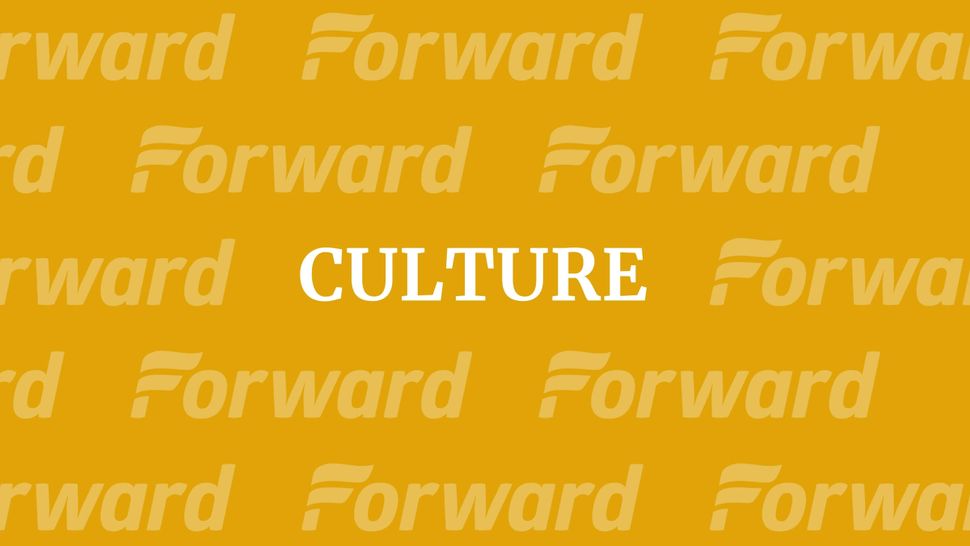How Graphic Novels Grew in Israel

When the artists Rutu Modan and Yirmi Pinkus formed the publishing house Actus Tragedus in 1995, it was, in Pinkus’s words, “an effort to find ourselves readers outside of Israel” for their comics and illustrations. Actus published books in English, an act that Modan and Pinkus said was seen at the time as snobbish and unpatriotic, even anti-Zionist.
But for Modan, publishing in English found her an international audience for her two graphic novels, “Exit Wounds” — published in the early 2000s, a love story whose themes reflect the impact of the Second Intifada on Israeli society — and “The Property,” which takes a young Israeli woman and her grandmother to Warsaw, ostensibly in order to pursue the restitution of lost property.
“In Israel — a country almost entirely bereft of homegrown graphic novels — Rutu Modan is a one-woman industry,” Tal Kra-Oz wrote when he interviewed Modan for the Forward in 2013.
“I wrote what I consider to be my first graphic novel when I was in second grade during the Yom Kippur War,” Modan said at London’s Jewish Book Week earlier this month. “I grew up in a hospital because my parents were both doctors. During the Yom Kippur War, soldiers were coming back from the front, with the helicopters landing in my neighborhood.” Her drawings were generic, rather than of that war Modan was too young to comprehend, but they depicted “dead people and wounded people, as seen through the eyes of a child.”
Before moving into the graphic novel, one of Modan’s first gigs with at a then-new local Jerusalem newspaper, where she pitched the idea of drawing comic strips. “There was no tradition of comics in newspapers, so I experimented in terms of style and humor. I did that for five years, but then I felt the need to do something more developed, but I didn’t have the confidence to write stories.” She worked for a period of time with Etgar Keret, before going on to publish stories of her own.
Pinkus, meanwhile, is better known in Israel for his fiction. “Professor Fabricant’s Historical Cabaret” combined narrative prose with hand-drawn imagery, while his 2012 bestseller “Petty Business” is a more traditional novel. That book “was the end of the route from visual storytelling to written storytelling,” Pinkus said. His illustrations, which continue to appear in the weekend edition of Yediot Aharonot, are “close to visual poems, dealing with issues one deals with in poetry, not in literature.”
“People always used to ask me, ‘Why are there no Jewish comics? Why are there no Israeli comics? It used to be said that comics weren’t for Jews,” Modan said. She believes the tradition of aniconism in Judaism and the prohibition on the graven image made Jews into a textual rather than a visual people. The notion of comics and graphic novels with a Jewish identity or inflection is, following this argument through, a modern or post-modern development.
However, Sarah Lightman — the editor of “Graphic Details: Confessional Comics by Jewish Women” — believes that the Jewish textual tradition is in fact “quite visual.” The ways in which the Torah and the Talmud space text in blocks in some ways resembles the paneling of a comic or graphic novel. In this kind of a layout, “it’s not a big jump to go to the image in the textual space,” Lightman said.
Towards the end of the session, I asked Modan and Pinkus whether there is an Israeli sensibility to their work — if there is something that makes Israeli cartoons or graphic novels distinctive. “I think it’s still too early to say,” Modan responded. “There is no tradition in Israel, so our work is the combination of many influences. It’s not like you follow a kind of style — you can do anything. There is an advantage to working in a place with no tradition because no-one knows what they’re supposed to do.”
Modan described the Israeli cartoon as an ‘eclectic’ combination of styles, with Pinkus adding that the styles and techniques of drawing present in Israel are a reflection of Israeli society and culture in general, which is rooted in Jewishness but is also the sum of the cultures brought to Israel by olim: western European, eastern European, Middle Eastern, north American. Without a native tradition, Israeli artists had “the privilege of the ignorant” when it came to their work. “There are no restrictions,” Pinkus said.

I hope you appreciated this article. Before you go, I’d like to ask you to please support the Forward’s award-winning journalism this Passover.
In this age of misinformation, our work is needed like never before. We report on the news that matters most to American Jews, driven by truth, not ideology.
At a time when newsrooms are closing or cutting back, the Forward has removed its paywall. That means for the first time in our 126-year history, Forward journalism is free to everyone, everywhere. With an ongoing war, rising antisemitism, and a flood of disinformation that may affect the upcoming election, we believe that free and open access to Jewish journalism is imperative.
Readers like you make it all possible. Right now, we’re in the middle of our Passover Pledge Drive and we still need 300 people to step up and make a gift to sustain our trustworthy, independent journalism.
Make a gift of any size and become a Forward member today. You’ll support our mission to tell the American Jewish story fully and fairly.
— Rachel Fishman Feddersen, Publisher and CEO
Join our mission to tell the Jewish story fully and fairly.
Only 300 more gifts needed by April 30
























